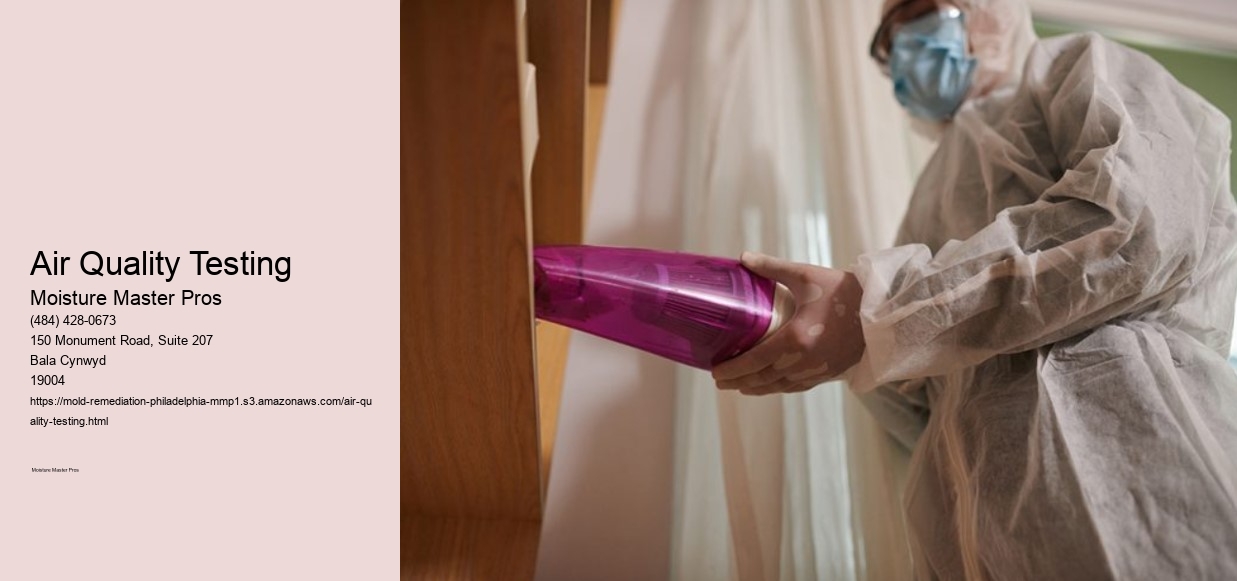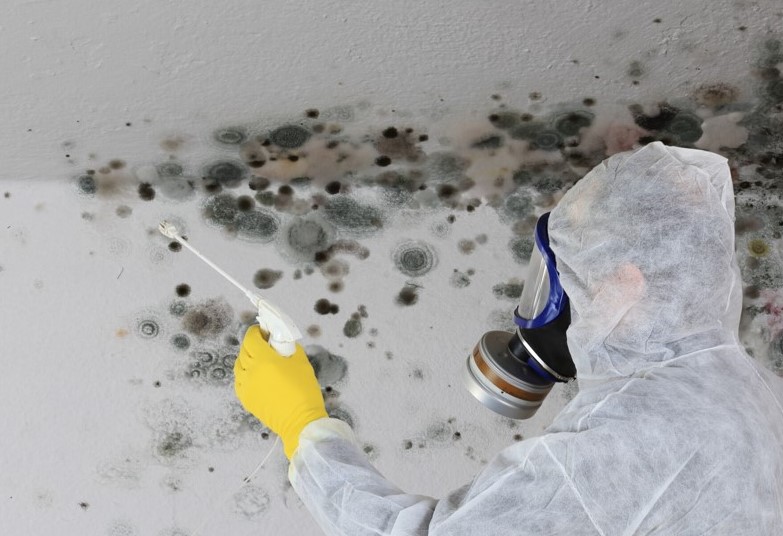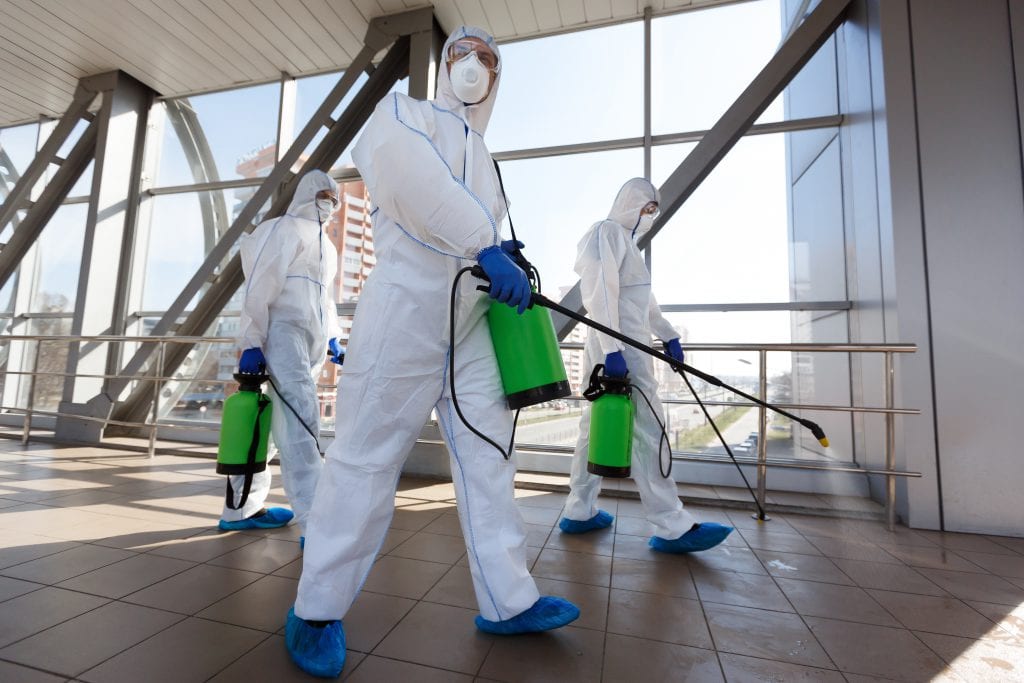

Professionals have the tools and expertise to thoroughly remove mold and prevent future growth, ensuring your home remains safe and mold-free.
Identifying a Reliable Mold Remediation Company
Certifications and Licenses
Importance of Certification
A certified company has met industry standards and is qualified to handle mold remediation effectively.
Types of Licenses Required
Check for licenses specific to mold remediation, which can vary by state and local regulations.
Experience and Expertise
Years in Business
A company with years of experience is likely to provide better service and results.
Case Studies and References
Look for case studies and ask for references to gauge the company’s track record.
Customer Reviews and Testimonials
Online Reviews
Read reviews on multiple platforms to get a well-rounded view of the company's reputation.
Word-of-Mouth Recommendations
Ask friends, family, or neighbors for recommendations based on their experiences.
Services Offered by Mold Remediation Companies
Comprehensive Inspection
A thorough inspection identifies the extent of the mold problem and the moisture sources.
Mold Removal Techniques
Professionals use various techniques, from chemical treatments to physical removal, to eliminate mold.
Post-Remediation Testing
Testing after remediation ensures that mold levels are back to normal and the problem is resolved.
Preventative Measures
Read about the best Air Quality Testing.A good company will also advise on preventing future mold growth, such as fixing leaks and controlling humidity.
Evaluating Costs and Estimates
Getting Multiple Quotes
Obtain quotes from several companies to compare prices and services.
Understanding Cost Factors
Costs can vary based on the size of the infestation, the methods used, and the time required.
Hidden Fees and Charges
Be wary of hidden fees.
Ensuring Quality and Safety
Use of Safe and Effective Methods
The company should use safe methods that won’t harm your home or health.
Guarantee and Warranty
A warranty shows that the company stands by its work. Look for guarantees on their services.
Compliance with Safety Standards
Ensure the company follows all safety standards and regulations to protect both workers and residents.
Questions to Ask Potential Companies
About Their Process
Ask for a detailed explanation of their remediation process.
About Their Team
Inquire about the qualifications and experience of their team members.
About Their Success Rate
Ask about their success rate and how they handle any potential issues that arise.
Red Flags to Watch Out For
Lack of Credentials
If a company can’t provide proper credentials, look elsewhere.
Unusually Low Estimates
Suspiciously low estimates can indicate subpar service or hidden costs.
Poor Communication
Good communication is key. Antimicrobial treatments If a company is hard to reach or unresponsive, it’s a bad sign.
The Role of Technology in Mold Remediation
Advanced Detection Tools
Modern technology can detect mold more accurately, ensuring thorough remediation.
Innovative Remediation Techniques
New techniques can be more effective and less invasive than traditional methods.
Understanding the Timeline for Mold Remediation
Initial Inspection Duration
The initial inspection usually takes a few hours, depending on the size of your home.
Mold Removal Timeframe
Mold removal can take from a few days to a week, depending on the severity of the infestation.
Post-Remediation Procedures
After remediation, additional steps like drying and ventilation may be necessary.
The Impact of Weather and Environment
Philadelphia's Climate
Philadelphia’s humid climate makes it susceptible to mold. Dampness Awareness of this helps in prevention and remediation.
Seasonal Mold Growth Patterns
Mold growth can peak in certain seasons. Knowing this helps in scheduling inspections and maintenance.
Choosing Local vs. National Companies
Benefits of Local Companies
Local companies understand the specific challenges of the area and can provide more personalized service.
Advantages of National Chains
National chains may offer more resources and a broader range of services.
Final Steps Before Hiring
Reviewing the Contract
Carefully review the contract to understand all terms and conditions.
Confirming the Schedule
Ensure the company’s availability aligns with your needs.
Preparing Your Home
Prepare your home by clearing affected areas and ensuring safe access for the remediation team.
Conclusion
Choosing the right mold remediation company in Philadelphia involves careful consideration of their experience, services, and customer feedback. By following these guidelines, you can ensure that you select a reliable company that will effectively address your mold issues and help maintain a healthy home environment. Remember, investing in professional remediation now can save you from more significant problems down the line. Mold inspection So, take your time, ask the right questions, and make an informed decision.
Mold Remediation vs. Mold Removal: What’s the Difference?
Introduction
Mold issues in homes and businesses can be a serious concern, not only for the integrity of the structure but also for the health of the occupants.
Understanding Mold
What is Mold?
Mold is a type of fungus that thrives in damp, humid environments. It reproduces by releasing tiny spores that float through the air until they find a suitable place to grow
Common Places Mold Grows
Mold can often be found in bathrooms, basements, kitchens, and any area with high humidity or moisture. Leaks, flooding, and poor ventilation can all contribute to mold growth.
Health Risks of Mold
Allergic Reactions
Exposure to mold can trigger allergic reactions, including sneezing, runny nose, red eyes, and skin rash. People with allergies to mold or a weakened immune system are especially vulnerable.
Respiratory Issues
Mold spores can cause respiratory problems, particularly for those with asthma or other preexisting conditions. Symptoms can include coughing, wheezing, and shortness of breath.
Other Health Concerns
Long-term exposure to mold can lead to more serious health issues, such as chronic sinus infections and other respiratory conditions.
Mold Removal vs. Mold Remediation
Definition of Mold Removal
Mold removal involves cleaning away the mold from surfaces. This process often focuses on visible mold and might not address the underlying causes of mold growth.
Definition of Mold Remediation
Mold remediation, on the other hand, is a comprehensive process that not only removes the mold but also addresses the source of the moisture problem, preventing future growth.
Key Differences Between Mold Removal and Remediation
Surface Cleaning vs. Deep Cleaning
Mold removal is akin to cleaning the surface, whereas mold remediation is a deeper, more thorough process that ensures the mold is eradicated from the root.
Addressing the Root Cause
Removal focuses on the visible mold, while remediation tackles the moisture issue that allowed the mold to grow in the first place. Toxic mold This difference is critical for long-term prevention.
Effectiveness and Longevity
Remediation is generally more effective and offers a longer-lasting solution compared to simple mold removal. By addressing the source, it prevents recurrence.
Mold Removal Process
Inspection
The first step in mold removal is inspecting the area to assess the extent of the mold growth. This helps in planning the removal process effectively.
Containment
Containing the mold ensures that spores do not spread to other areas during the cleaning process. This is crucial to prevent further contamination. |
Cleaning and Disinfection
The actual removal involves cleaning the mold from surfaces and disinfecting the area to kill any remaining spores.
Post-Cleaning Inspection
After cleaning, a post-inspection ensures that the mold has been effectively removed and the area is safe.


Mold Remediation Process
Initial Assessment
A thorough assessment is conducted to identify the extent of mold infestation and the source of moisture. This helps in creating a detailed remediation plan.
Containment and Air Filtration
Containment measures, including air filtration, are implemented to prevent mold spores from spreading during the remediation process.
Removing Mold-Infested Materials
In some cases, materials like drywall or carpeting that are infested with mold may need to be removed and replaced to ensure complete eradication.
Cleaning and Disinfection
Like removal, remediation includes cleaning and disinfecting all affected areas to eliminate mold spores.
Preventative Measures
Preventative steps, such as improving ventilation and repairing leaks, are taken to address the root cause and prevent future mold growth.
Choosing Between Mold Removal and Remediation
Severity of the Mold Problem
The decision between removal and remediation often depends on the severity of the mold problem. For minor issues, removal might be sufficient, but for more extensive growth, remediation is necessary.
Long-Term Solutions
For long-term peace of mind and a healthier environment, mold remediation is usually the better choice as it prevents future problems by addressing the root cause.
Conclusion
Recap of Key Points
Understanding the difference between mold removal and remediation is crucial. While removal is a surface-level solution, remediation provides a comprehensive approach to tackle mold and prevent its return.
Final Thoughts
When dealing with mold, consider the severity and the potential health risks. Leak detection Opting for mold remediation ensures a thorough and lasting solution, keeping your home or business safe and healthy.
Mold problems can be daunting, but with the right approach, you can ensure your space is mold-free and safe for everyone.
The Role of Thermal Imaging in Effective Mold Remediation
Introduction to Mold Remediation
Mold remediation is crucial for maintaining a healthy living environment, but traditional methods of mold detection can sometimes fall short. Here, we'll explore how thermal imaging has revolutionized mold remediation by making the detection process more accurate and efficient.
What is Mold Remediation?
Mold remediation involves identifying, cleaning, and removing mold from an indoor environment. It’s essential for preventing health issues and structural damage. Mold can grow in damp, humid areas, often hidden behind walls, under floors, and in ceilings.
Common Causes of Mold Growth
Mold thrives in moist environments. Common causes include water leaks, high humidity, poor ventilation, and flooding. Identifying these sources is crucial for effective remediation.
Traditional Mold Detection Methods
Traditionally, mold detection has relied on visual inspection and air quality testing. These methods can be effective but often miss hidden mold growth. This is where thermal imaging steps in as a game-changer.
Introduction to Thermal Imaging
What is Thermal Imaging?
Thermal imaging is a technique that uses infrared technology to detect heat patterns. Dehumidification It captures temperature variations in objects, which can reveal hidden issues such as moisture behind walls, a common precursor to mold growth.
How Thermal Imaging Works
Thermal imaging cameras detect infrared radiation (heat) and convert it into an electronic signal. This signal is then processed to produce a thermal image, highlighting temperature variations in different colors. Cooler areas often indicate moisture, a key factor in mold growth.
Benefits of Using Thermal Imaging in Mold Remediation
Accurate Detection
One of the biggest advantages of thermal imaging is its accuracy. It can pinpoint hidden mold that’s not visible to the naked eye, ensuring no area is overlooked during remediation.
Non-Invasive Method
Unlike traditional methods that might require invasive procedures like cutting into walls, thermal imaging is non-invasive. It allows inspectors to see behind walls and under floors without causing any damage.
Time and Cost Efficiency
Thermal imaging speeds up the detection process and reduces labor costs by quickly identifying problem areas. This efficiency translates into cost savings for homeowners and businesses.
Enhanced Documentation
Thermal imaging provides visual documentation of mold-affected areas. These images can be used in reports and insurance claims, offering clear evidence of the extent of mold contamination and the necessity for remediation.
Steps Involved in Thermal Imaging for Mold Detection
Initial Assessment
The process begins with an initial assessment to identify areas likely to have moisture problems. This step involves discussing any known issues with the property owner and performing a preliminary inspection.
Conducting the Thermal Imaging Scan

Mold remediation involves several key steps, including inspection, containment, air filtration, mold removal, and restoration. Moisture Master Pros ensures each step is carried out meticulously to effectively remove mold and prevent recurrence.
The cost of mold remediation in Philadelphia, PA, can vary widely depending on the extent of the mold problem, the size of the affected area, and the complexity of the job. For a more accurate estimate, contact Moisture Master Pros for a comprehensive assessment and detailed quote.
During mold remediation, Moisture Master Pros will: Inspect and Assess: Identify the extent of mold growth. Contain: Seal off the affected area to prevent spore spread. Filter Air: Use air filtration systems to remove mold spores. Remove Mold: Clean and remove mold-infested materials. Restore: Repair and replace damaged areas to restore your home.